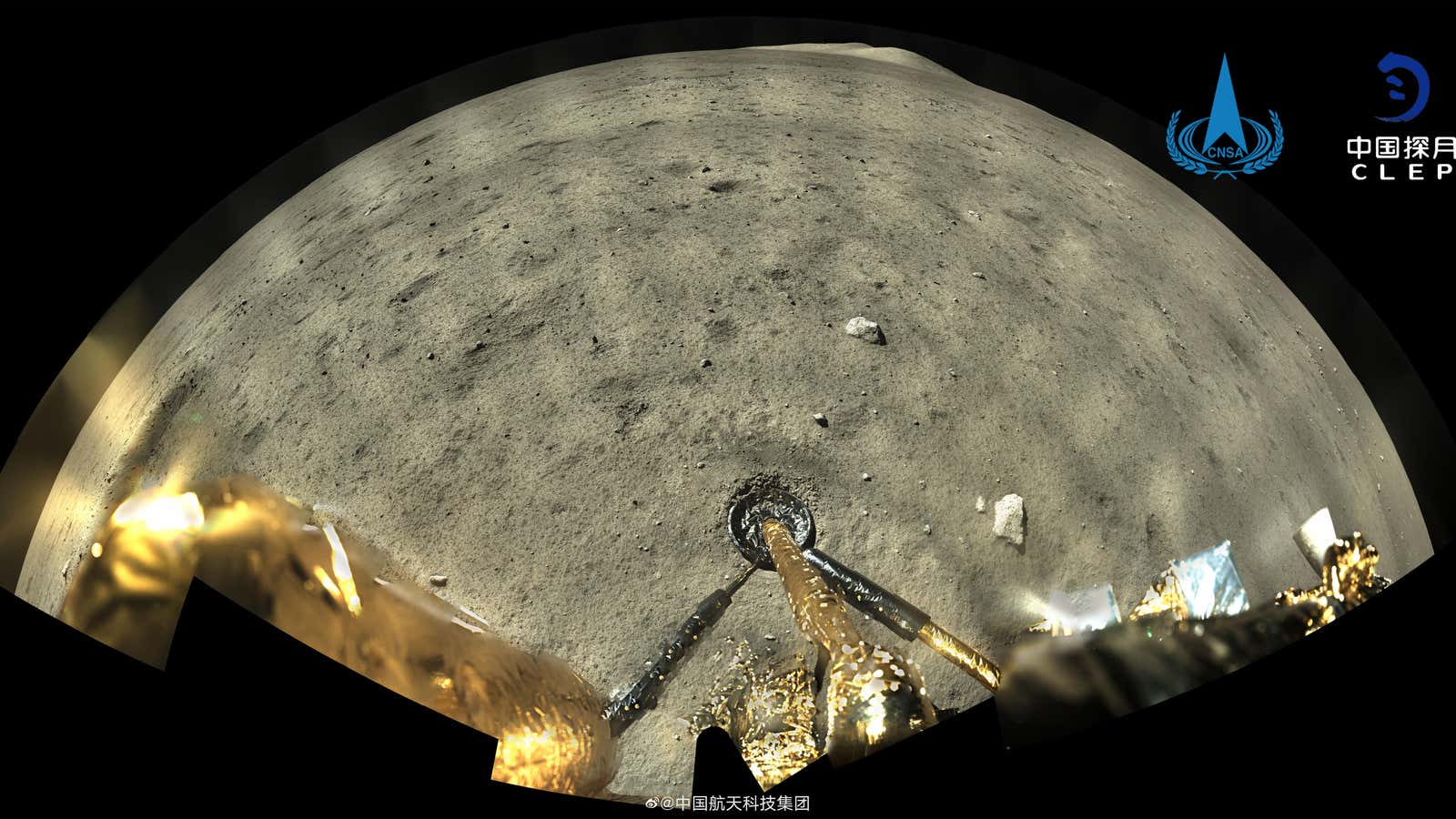For the second year in a row, China has landed an ambitious robotic explorer on the moon.
This mission, called Chang’e 5, will make the first attempt to return samples of lunar soil to earth since Russian robots and NASA’s crewed Apollo missions did so more than four decades ago. But the physics underlying these missions hasn’t changed—it still requires a vehicle with a total mass of 870 metric tons to bring just 2 kilograms of rock back to earth, while carrying a few other scientific instruments along for the ride.
Scientifically, the trip to an unexplored zone promises to yield new information about the moon’s evolution. Technologically, a successful sample return will demonstrate China’s capacity for sophisticated systems engineering. Politically, Chang’e 5 will ramp up the pressure on the US to deliver its own prestige-enhancing moon mission.
The lunar renaissance of recent years, driven by the confirmation of water there in 2008, will once again test the viability of different approaches to spaceflight, but in a different way than during the Cold War. Rather than a battle of socialism versus capitalism, this time around, the space race will pit America’s open and fractious space program against China’s centralized approach.
The difference is strategic: China’s Chang’e 5 mission is, you guessed, the fifth mission in a steady progression of lunar exploration by the China National Space Administration. The country’s space strategy is planned in careful five-year chunks, and the path ahead includes another sample return in 2024 and a polar survey in 2030 before Chang’e 8, which is designed to lay the groundwork for a crewed lunar research base in 2036.
The US took a similar approach in the 1960s, sending a steady series of surveyor satellites and probes before the eventual moon landing. Today, though, NASA’s Artemis program looks less like a single unified effort and more like an It’s a Mad, Mad, Mad, Mad World-style race back to the moon—and I mean that as a compliment.
The US will be paying as many as four private companies to launch six different lunar missions over the next three years, using multiple spacecraft and landers to carry a variety of instruments designed by NASA and universities, including an ice-hunting drill and a rover called VIPER. A dozen other firms are waiting in the wings to compete for future moon missions.
Today, for example, NASA announced four companies, including Japan’s ispace, that have been hired to collect lunar samples on the moon. The companies will package the lunar regolith and leave it on the surface for future collection. This effort isn’t just about gathering scientific samples as it is creating a legal precedent for using space resources, laying the groundwork for a broader lunar economy in the future.
And that’s just the start. The eventual return of US astronauts to the moon is likely to include spacecraft built by Boeing, SpaceX, United Launch Alliance, and Maxar, and they could be delivered to their destination in a lander built by one of three competing consortiums that include firms like Blue Origin, Lockheed Martin, and Dynetics. And companies in Europe, Canada, India, and Japan are already participating in various stages of what is beginning to seem like a project that’s much bigger than NASA alone.
These companies aren’t just competing against each other to produce the best design for the dollar. They’ll also compete politically to influence the architecture and timing of the lunar mission, as part of a broad debate that will also include NASA officials, lawmakers, scientists, and occasionally public opinion. We have to imagine some similar battle of interests taking place behind the scenes in China, but outsiders don’t know the true stakes or how they are ultimately resolved.
Getting all the different contributors to the US lunar return on the same page can seem daunting compared to the efficiency displayed by China’s moon march. That’s sort of the point: The US knows it can mobilize a national effort to put people on the moon. Whether it can create a lunar economy is a much more interesting question.
A version of this story first appeared in Quartz’s Space Business newsletter.
